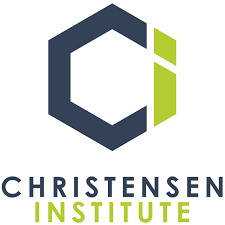EXECUTIVE SUMMARY
The US child welfare system incentivizes a reactionary rather than a proactive response, resulting in cases of child abuse and neglect that could have been avoided. Within the system, well-established business models and federal financial incentives are designed to see and serve families who are in crisis. Effectively, the system focuses on child safety and intervention after an allegation of abuse and neglect rather than on child well-being, which we define in this report as more holistic than just safety.
Reactive interventions alone should not be the norm. A more holistic approach that also proactively focuses on identifying the root causes of, and offering solutions to, issues that children and families face (e.g., poverty and lack of resources or support) is required to promote well-being. In a more holistic and prevention-inclusive system, government agencies are best suited to provide funding and support, whereas Community-Based Organizations (CBOs) may be better equipped to provide prevention-oriented services.
Altering business models to embody a proactive approach will support the development of an ecosystem that prevents child abuse and neglect as well as one that responds after it has occurred. Several state governments and child welfare CBOs are enhancing their focus on prevention by prioritizing children’s and families’ needs, the Drivers of Health (DOH), and/or the “Strengthening Families Protective Factors Framework.” However, these efforts are not without challenges.
INTRODUCTION
(The story below is a fictionalized story based on lived experiences found in our research.) Imagine you’re a single father with two kids. Your children, Sam (8) and Olivia (6), are vivacious, and you love them more than you imagined possible. You’re no longer in a relationship with their mother. She lives in a different state, and she never sees the children. You, Sam, and Olivia live with your brother because your low-paying job doesn’t enable you to afford a home of your own. You’re grateful for his hospitality, and while his home has the basic necessities, it’s in need of many repairs. Also, you both work long hours, so sometimes the children are left alone because you can’t afford child care.
One day, someone reports your living situation to a child protection agency; the agency deems it unsuitable for your children, takes them away from you, and places them in foster care. No one provides you or your children with support to find child care or employment assistance to help you afford another place to live. The pain of losing your children is unfathomable. You knew the home wasn’t the most luxurious, but they had a roof over their heads and a warm bed to sleep in. You didn’t want to leave them alone while you were at work, but you didn’t have any other choice. Child care is expensive and you are barely making ends meet. You tried your best to take care of them. You can’t believe how a system meant to protect them could tear apart what little they had. Despite your efforts and dedicated fight to get them back, ultimately, they both get adopted.
This story highlights the fact that child welfare agencies spend the majority of their expenditures on out-of-home placements rather than on prevention support or resources for families.1 Prevention is the approach of providing aid to families in order to meet their needs for resources or support to improve their outcomes and keep them from entering or reentering the child welfare system. The objective of prevention is to ensure the well-being of children and families and prevent child abuse and neglect by both reducing risk factors and promoting protective factors.
From a public health perspective, there are three levels of prevention: primary, secondary, and tertiary. Primary prevention is directed at the general population to prevent maltreatment before it occurs; secondary prevention targets individuals or families in which maltreatment is more likely; and tertiary prevention targets families in which maltreatment has already occurred.3 This report focuses on the critical role of secondary and tertiary prevention in the child welfare system, as prevention is required in any system that seeks to improve well-being.
Financing
The financing structure of the child welfare system is a critical driver of why it prioritizes out-of-home placements and, therefore, generates the outcomes it currently produces. Across the US, child welfare agencies’ spending and financing sources vary. Each funding source has its own purposes, eligibility standards, and restrictions. Navigating these funding sources can be complex and challenging, affecting states’ choices regarding the services they provide and how they operate.
In fiscal year 2020, agencies across the US used a variety of funding sources totaling $31.4 billion. Fifty-eight percent of all monies spent by child welfare agencies are state and local funds, and 42% are federal funds. Forty-five percent of their expenditures were spent on out-of home placements, while only 14% were allocated to prevention.
There are multiple federal funding streams that support the child welfare system; some are specifically for child welfare activities, and others have broader purposes that some states have leveraged to fund child welfare activities. The first category primarily includes Title IV-E, IV-B of the Social Security Act, and the Child Abuse Prevention and Treatment Act (CAPTA). Funding streams that have broader purposes include the Temporary Assistance for Needy Families (TANF), Social Services Block Grant (SSBG), and Medicaid, among others. Child welfare agencies utilize Title IV-E funding the most; it makes up 57% of all federal expenditures.TANF trails at 19%, SSBG at 10%, Medicaid at 7%, and Title IV-B at 4%.

